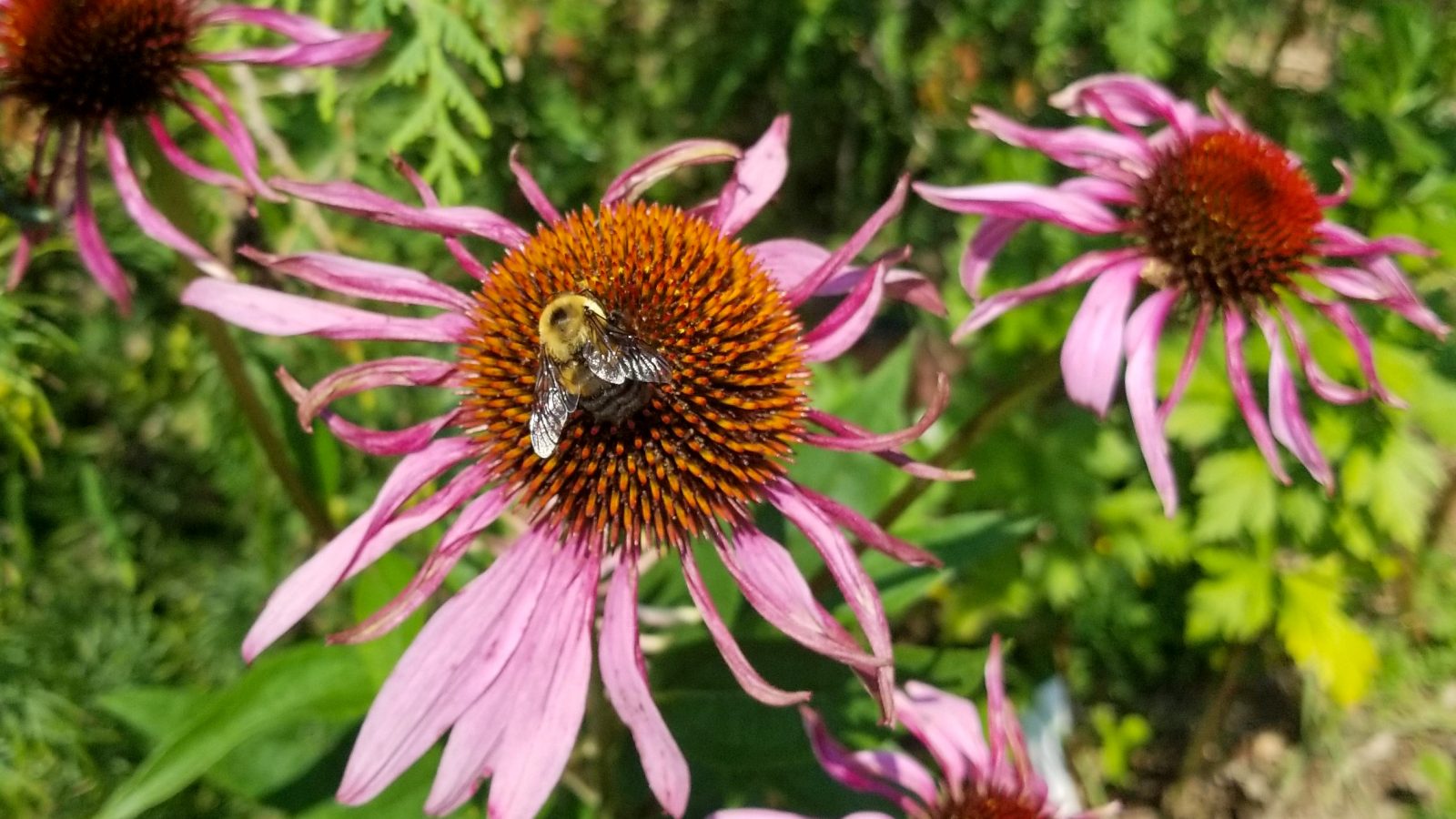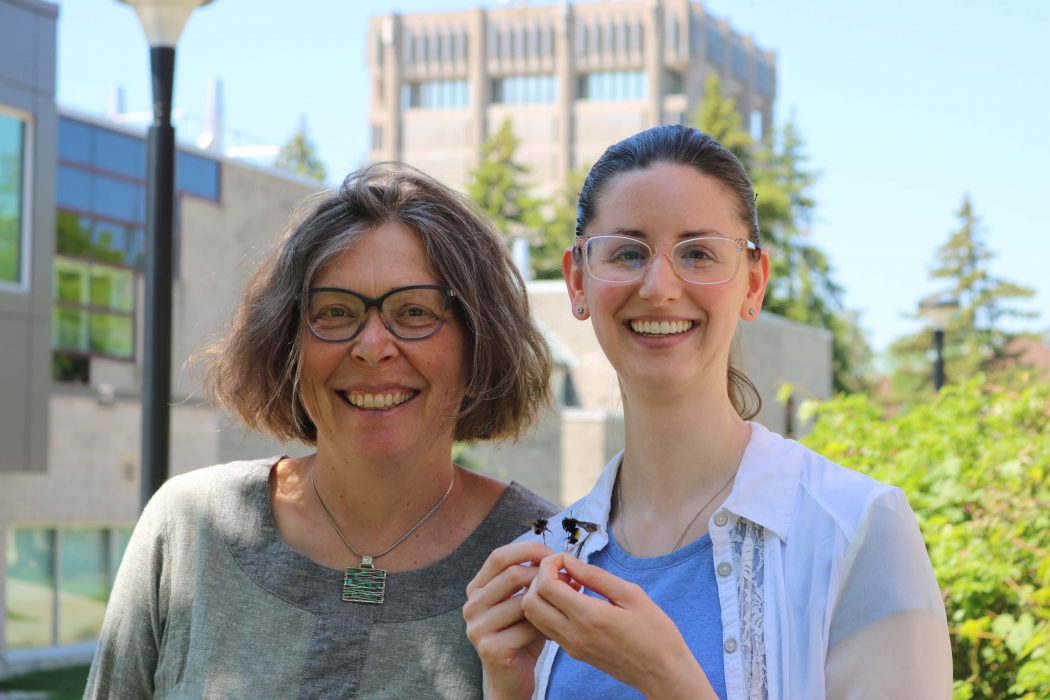 Findings from a new bumble bee research study conducted by Master of Biological Sciences student Jocelyn Armistead reveal that Brock is home to two rare species — Bombus terricola and Bombus pensylvanicus — listed as “special concern” under the Committee on the Status of Endangered Wildlife in Canada.
Findings from a new bumble bee research study conducted by Master of Biological Sciences student Jocelyn Armistead reveal that Brock is home to two rare species — Bombus terricola and Bombus pensylvanicus — listed as “special concern” under the Committee on the Status of Endangered Wildlife in Canada.Brock University’s main campus is buzzing.
Newly released research has found two rare species of bees are among those who call campus home.
The bumble bees — Bombus terricola and Bombus pensylvanicus — were collected on Brock property by Master of Science in Biological Sciences student Jocelyn Armistead during her research fieldwork. The pollinators are listed as “special concern” under the Committee on the Status of Endangered Wildlife in Canada.
Interested in conservation, Armistead came to Brock to explore the most efficient ways of catching bumble bees for research. She focused on three methods of bee collection: blue vane traps, timed-targeted netting and timed photographic collection.
“If we want to know if a species is doing well or not in an environment, we need to collect information,” says Professor of Biological Sciences Miriam Richards, Armistead’s supervisor, who has been studying bees for more than 30 years. “A species can go into decline but with insufficient data, we may never know before it’s too late.”

Professor of Biological Sciences Miriam Richards (left) and Master of Biological Sciences student Jocelyn Armistead, who holds two rare bumble bees collected on Brock University’s campus.
Armistead spent the summer and early fall of 2021 collecting and documenting bumble bees at eight sites across the Niagara region for her thesis research comparing collection methods for evaluating bumble bee diversity.
“As bumble bee queens are active in the spring, this study was designed to avoid collecting queens, in order to not interfere with reproduction of the colony,” she says. “Accidentally killing a queen in spring means you lose the entire colony she would have produced.”
The process of identifying each bee includes using reference books — and in many cases a microscope — and thoroughly exploring each detail for accuracy, which takes considerable time.
Of the 14 species of bumble bees known to be in the Niagara area, Armistead collected 12 of them from eight sites, with the Brock location catching the Bombus terricola and Bombus pensylvanicus in a blue vane trap — a collection jar attached to a set of blue panels that bees often mistaken for flowers.
The rare bumble bees were caught near undisturbed fields.
According to Armistead, her newly released findings suggest that using a combination of the collection methods is the best way forward for researchers to get up close and personal with the tiny insects.
“The blue vane trap caught more bumble bee species with fewer specimens overall,” says Armistead. “While netting is a classic method of bee collection that works well, photos can identify bumble bees almost as well and won’t kill them.”
While Richards has been conducting bee research in Niagara since 2003, other studies she’s conducted have used methods of collection not specific to bumble bees.
“In almost 20 years of research, it is interesting we have never caught either of these species before,” she says. “Our findings show that we have some good habitat around Brock’s campus and that should be protected as much as possible.”
Members of the community can contribute to bumble bee conservation in a number of ways.
While common vetch, thistle, goldenrod, and teasel are plants Armistead commonly found bumble bees on during her study, she says, “many of these are fast spreading, non-native, or thorny plants. For home gardens I would recommend bee balm, coneflowers, and asters as I also collected bumble bees on these plants and there are native varieties available.”
The public can help to preserve bumble bees by not “tidying up,” says Richards. “Bumble bees especially need hollow logs, grass piles and rocks to nest under.”
Richards also advises against the use of herbicides or pesticides.
Armistead’s thesis will be available in the Brock Digital Repository in the coming months.
For more information, visit Brock Bee Lab and “Promoting Pollinators: Niagara Bees and How to Help Them.”








